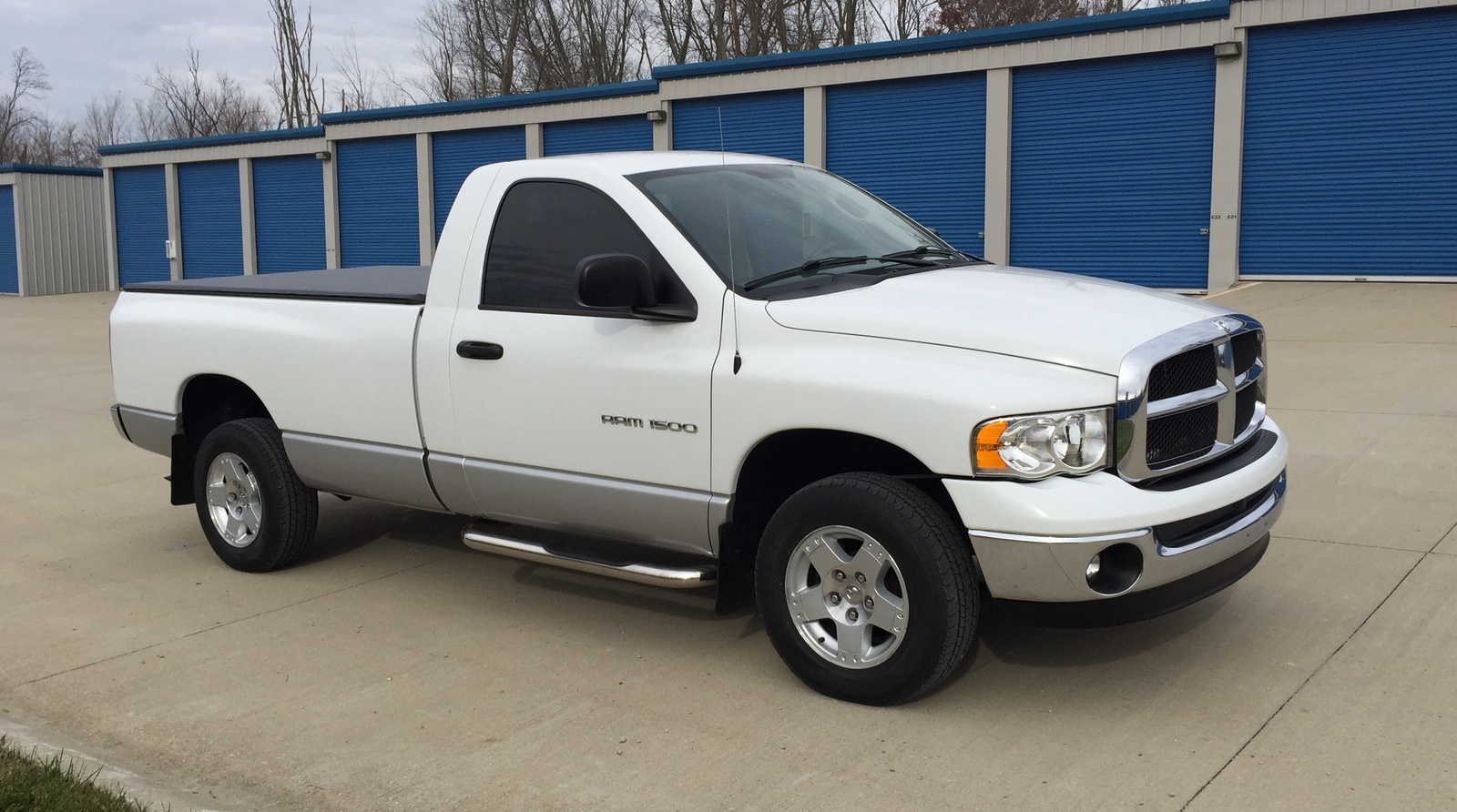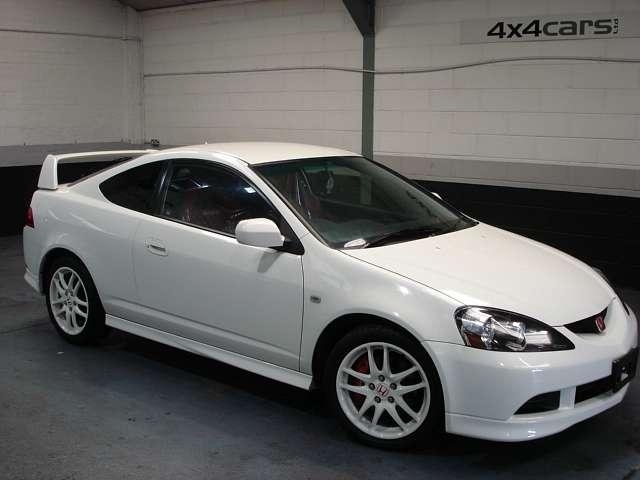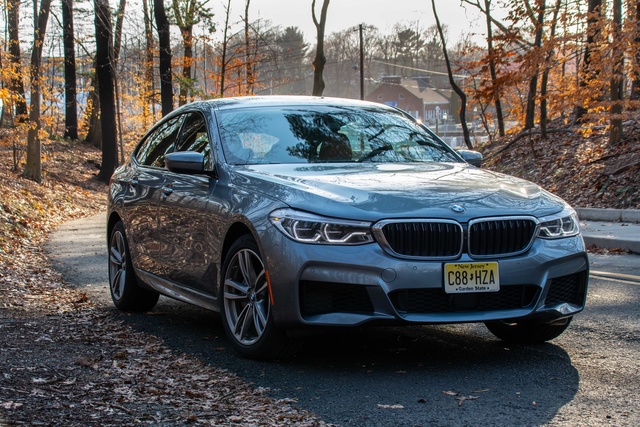In 2011, what was then FCA (Fiat Chrysler Automobiles, now Stellantis) spun off Ram into its own brand, with the Ram 1500 pickup as its signature product. But in the previous three decades before, it had been the Dodge Ram 1500, and before that, the Dodge D-Series. This hardy line of trucks goes back much further, tracing its origins back to the first Dodge consumer pickups of the 1920s, but it was the 1994 Dodge Ram 1500 that put the brand on the map for modern truck buyers.
Dodge had sold plenty of pickups from the 1940s to the 1970s, but parent company Chrysler’s brush with bankruptcy in the seventies meant that it deferred investment from pickups for a long time. It fielded the original Ram pickup for more than two decades before completely reinventing it in 1994, but when it did, the impact was seismic.
Penned under the eye of AMC and Chrysler designer Phillip E. Payne, the 1994 Dodge Ram 1500 not only had an all-new chassis and interior but also big-rig-influenced styling and a few high-profile new features, such as an optional V10 engine. Sales soared by 365% from 1993 (the last year of the old design) to 1995 (the first full year of the new one), and Dodge never looked back. The Dodge Ram 1500 has been a significant player in the segment ever since, and the 1994 model’s styling has directly influenced every Dodge Ram 1500 (and Ram 1500) introduced since.
Since we cover the Ram 1500 separately, we’ve outlined the four generations of the old Dodge Ram 1500 here, complete with some recommendations about what to pay and what to watch out for. Over the course of the three post-1993 generations, this truck evolved from glorified farm equipment to one of the most comfortable and refined trucks on the market. By the time Ram was spun off, the 1500 was setting the bar for ride quality and interior comfort in a full-size light-duty pickup truck.
Dodge RAM 1500 Buying Guide: Cost, Reliability, and the Best Years to Buy
- Frequently Asked Questions
- Dodge RAM 1500 Pros and Cons
- Dodge RAM 1500 Generations
- Fourth Generation (2009-2010)
- Third Generation (2002-2008)
- Second Generation (1994-2001)
- First Generation (1980-1993)
Frequently Asked Questions
Which Dodge RAM 1500 years are the best?
2009 and later models have solid reliability records, as do pre-1999 models. Since the later models are going to be in better shape, the fourth-generation Ram pickup (including its time under the Ram brand name) is likely to be the best bet. Thanks to their coil-spring rear suspensions and very modern interiors, they also feel like newer trucks than they actually are. The fourth-gen Dodge Ram 1500 stayed in production late into 2024 as the Ram 1500 Classic, a testament to the durability of the design.
What are the worst Dodge RAM 1500 years?
Without a doubt, the 2002 to 2004 Dodge Ram 1500s have the worst reliability record of any version of the truck. The main culprits are its two then-new “PowerTech” engines, a 3.7-litre V6 and especially the larger 4.7-litre V8. They were intended to help save fuel but didn’t, and they have a bad reputation for oil sludge and a big appetite for sensors, ignition coil packs, lifters, and other components. These trucks also come in for criticism for their poor-quality interiors, the materials of which just aren’t as good as later iterations.
Is a used Dodge RAM 1500 a good deal?
Generally, yes. The Dodge Ram 1500 tends to cost less than an equivalent Ford F-150 or Toyota Tundra. However, it typically offers less payload and towing capability and fewer configurations than the Ford. But it makes up for that in handling and refinement in most generations, and it offers lots of style. In general, all generations except the 2002 to 2008 third-generation model are a good deal. Still, even in those years, the Hemi-powered examples and the unusual street performance trucks Dodge built on this chassis are good buys.
Dodge RAM 1500 Pros and Cons
Pros:
- Multiple spacious cab options
- Comfortable ride quality
- Lots of style, capability, and clever storage features
Cons: - Unreliable engines in some years
- Not always as capable as rivals
- Braking issues in some years
Dodge RAM 1500 Generations
Fourth Generation (2009-2010)
Though this long-running generation became the Ram 1500 for 2011, it debuted as the fourth-generation Dodge Ram 1500 in late 2008 and was still marketed as a “Dodge Ram” until 2013. This was not a particularly auspicious time to launch a brand-new pickup, as fuel prices spiked early that year and the arrival of the trucks at dealerships coincided with the onset of the Great Recession, but the truck itself was exceptional. It also stayed with us into 2024, as Ram kept it alive for a few years as the “Ram 1500 Classic” after it debuted the next generation Ram 1500 in 2019.
The fourth-generation Dodge Ram 1500 was the first modern truck to offer a coil-spring rear suspension instead of the traditional leaf springs, making for a more comfortable ride. This huge change, which came with only a modest impact to payload and towing capacities, set the standard for ride and handling in the full-size truck class for the next decade, and Ram still has an advantage over other trucks in this area today thanks to this decision. Additionally, many new storage, infotainment, and active-safety features were integrated into Ram’s lineup on this truck.
Over time, it also saw the introduction of a new V6 base engine and updated versions of the Hemi V8 introduced on its predecessor, but in the early days the lineup was fairly simple.
In Canada, there were four trims: ST, SLT, Sport, and Laramie. They ranged from simple work trucks to genuinely plush rides, and the top-tier Laramie set new standards for interior materials and design at the time. It also included navigation with a 6.5-inch touchscreen display (and an early version of Chrysler’s UConnect infotainment system), leather seats, and even a heated rear seat in its crew cab and an option for a 506-watt Alpine stereo.
There were regular, quad (extended), and crew cabs, plus a long (8-foot) or short (6.5-foot) box for the regular cab. The other cabs used the latter bed. For 2011, two new trims were added, the Big Horn and the Outdoorsman. This generation also saw the introduction of the clever RamBox system, which integrates storage lockers into the bedsides, among other clever cargo stowing features.
Engine options included a 3.7-litre PowerTech V6 with 215 horsepower and 235 pound-feet of torque, which was mated to a four-speed automatic transmission in all rear-drive models. Four-wheel drive Ram 1500s, meanwhile, got a 4.7-litre V8 with 310 ponies and 330 lb-ft of torque or a 5.7-litre V8 pushing out 390 horses and 407 pound-feet of torque, both mated to a five-speed automatic transmission. The 1500 could tow a maximum of 4,650 kilograms (10,250 pounds).
Ram eventually replaced the PowerTech V6 with the new 3.6-liter Pentastar V6 in 2013 and dropped the old 4.7-liter V8 a year later, but those changes are described in our Ram 1500 guide.
These early fourth-generation Ram pickups are affordable nowadays and similar to the current Ram 1500 Classic. They have a solid reliability record and offer some configurations that are hard to find on other trucks, like regular cab models with short beds. Due to their age, inspecting for rust is important, but you can pick up clean early fourth-gen Dodge Ram 1500 models with under 150,000 kilometres on the odometer for roughly $16,000 to $19,000, even top-trim Laramies.
Third Generation (2002-2008)
For the 2002 to 2009 generation of the Dodge Ram 1500, the “Big-Rig” styling continued on an all-new frame and chassis. Live front axles on four-wheel-drive models were replaced with an independent front suspension, and all versions got rack-and-pinion steering for the first time. These were significant steps toward the smooth-riding, well-handling Ram 1500 we know today. The cabin got a complete redesign, and while it used a lot of hard plastics, it looked more modern than before. There were also many new powertrains, though here this redesign would later create controversy.
Of the previous generation’s engines, only Dodge's long-running 5.9-litre V8 was carried over. At the lower end of the lineup were two new “PowerTech” family engines, a 3.7-litre V6 and a 4.7-litre V8. The V6 made 215 horsepower and 235 pound-feet of torque, while the 4.7-litre V8 made 235 horsepower and 295 pound-feet of torque, though it got a boost to 310 horses and 330 pound-feet in 2008, this design’s final year.
The two PowerTech engines were eventually refined into decent powerplants, but in the early years, they developed a bad reputation for mechanical problems and oil sludge issues. Indeed, the worst years for reliability of any Dodge Ram 1500 are 2002 and 2003, in part because of these engines. Nor did their smaller size necessarily make them fuel efficient. The new 4.7 got roughly the same fuel economy as the four-decade-old 5.9 at the time.
The ancient 5.9 remained for 2002 and 2003, with 245 horsepower and 335 pound-feet of torque, and if you’re buying a truck from one of these years, it’s the engine to have. In 2004, the 5.9 gave way to the potent and long-lived 5.7-litre Hemi V8, which then made 345 horsepower and 375 pound-feet of torque. While not terrible for the day, this 1500’s tow and payload ratings fell short of competitors like the Ford F-150. Early on, it could tow a maximum of 3,900 kilograms (8,650 pounds) and handle 840 kilograms (1,850 pounds) of payload. Over time, max towing rose to 4,100 kilograms (9,100 pounds), but payload didn’t change much.
Only two basic bodies were offered on the 1500, though more cabs were available on the heavy-duty 2500 and 3500 models. These came as regular or quad cabs, the quad being a smallish crew cab with long (8-foot) or short (6.5-foot) beds, though quad cabs could only have the latter. At first, buyers could choose from five-speed manual or four-speed automatic transmissions, but later, six-speed manual and automatic gearboxes were offered.
2006 saw some significant changes to the Dodge Ram 1500, including the first addition of optional navigation, satellite radio, a sunroof, an upgraded sound system, and Bluetooth connectivity. Dodge also added the vast Mega cab, but it came only on the heavy-duty models.
In these years, the standard trims were typically the ST, SLT, and Laramie, but there were also dozens of special models.
The most special of all was the SRT-10, a high-performance street truck that used the 8.3-litre V10 from the Dodge Viper mated to a six-speed manual or four-speed automatic. With 510 horsepower, it was one of the fastest full-size pickups ever made until the more recent EV pickup era. There were regular and quad-cab versions, with the former being the faster (and arguably cooler) of the two. If the SRT-10 is too costly, there were also Hemi-powered performance versions like the Rumble Bee, Daytona, and Hemi GTX.
Unfortunately, this generation of Dodge Ram 1500 has the worst reliability record of any of this truck’s generations and generates the largest number of owner complaints. The worst of those complaints centre on the 3.7 and 4.7-litre engines and their oil sludge problems, but the overall quality of the trucks and particularly their interior pieces have also come in for a drubbing by owners and critics alike for years. They just don’t hold up as well as they should. These trucks also seem especially vulnerable to rust.
Given their age and record, it’s not surprising that these trucks are really cheap now. You can pick up reasonably clean, sub-150,000-kilometre examples for approximately $8,000 to $14,000. The special models, like the Rumble Bee and especially the SRT-10, will cost quite a bit more. SRT-10s are approaching collector status now, so don’t expect to find a nice one for less than $40,000.
Second Generation (1994-2001)
The second-generation Ram 1500 was a game-gamer for Dodge, highlighted by its “Big-Rig” styling. Not only was the body totally new, but the frame and much of the running gear were as well. And it wasn’t just pretty—Dodge engineers had done lots of research on job sites to figure out how to make a cabin full of clever storage and work-assisting features. The result was the most attractive and user-friendly truck on the market in the 1990s, and a star turn in Twister didn’t hurt the truck’s marketing efforts.
While this was the Dodge’s first comprehensive redesign in 22 years, the truck’s engines were largely carried over from the previous generation. A number of updates came in 1997, including the introduction of the Quad Cab, which was an extended cab with rear-hinged clamshell doors. You could still get the 2-door Club Cab until the end of this production run. Other updates included a digital odometer, dual airbags, and plastic fold-out towing mirrors.
Throughout this generation, the base powertrain was the 3.9-litre Magnum V6 engine, which produced 175 horsepower and 225 pound-feet of torque. Dodge also offered a 5.2-litre V8 that produced 230 horsepower and 295 pound-feet of torque.
Buyers could also select a 5.9-litre Magnum V8 that made 230 horsepower and 330 pound-feet of torque when new. In 1998, output was upgraded to 245 horsepower and 335 pound-feet of torque. All three engines were long-serving members of the Mopar family, and durable if not exactly efficient. Maximum payload in these years was around 725 kilograms (1,600 pounds), and the max tow rating just under 3,000 kilograms (6,600 pounds). Those are midsize truck numbers today, and weren’t best in class then, but these are still capable pickups for most users.
There were relatively few configurations back then, all of which seem a little basic compared to today’s Ram 1500s. The feature sets were pretty sparse and included an AM/FM stereo with a tape deck. Power locks were optional, as was an Infinity CD audio system starting in 1995. In 1996, an electronically controlled automatic transmission was introduced, as was ODB-II (On Board Diagnostics). This truck did not change very much over the course of its life, though there were a few special edition models like the Indy and SS/T (both street trucks) and the SLT Off-Road "Edition,” with skid plates an extra off-road gear. The design also proved very reliable, if rust prone, thanks to its familiar mechanical pieces. On any 1500 of this era, check the frame and body for rust before purchasing.
These trucks are at the bottom of their depreciation curve now and just beginning to see collector appreciation. Rare models like the SS/T are already rising in value, but most second-generation Dodge Ram 1500s in good shape should cost between roughly $5,000 and $15,000. They’re not as capable as later Ram 1500s, but they look good, and they’ll do most light-duty jobs.
First Generation (1980-1993)
In the 1980s, trucks were far different beasts. They may occasionally have to take kids to school, but they were really all about the work site. This really didn’t change until the turn of the century. This original Dodge Ram 1500 actually featured a little ram hood ornament and was offered in single cab, extended cab, and crew cab configurations. Technically, it's only barely a "1500," and at various times it was the D-150 and W150, but those designations served the same purpose.
The first generation of the Dodge Ram dates far back enough that it was offered with Chrysler’s venerable slant-6. Other engines included a gas V8 and a Cummins diesel inline-6. The 3.7-litre slant-6 made just 95 horsepower and 170 pound-feet of torque when new. It was replaced with a 3.9-litre V6 in 1988, making 125 horsepower and 195 pound-feet of torque. This was again replaced in 1992 with a 3.9-litre Magnum V6. It made 175 horsepower and 225 pound-feet of torque.
If you wanted V8 power, the initial offering was a 5.2-litre V8, putting out 140 horsepower and 240 pound-feet of torque. In 1988, output was upgraded to 170 horsepower and 260 pound-feet of torque. It was replaced with a Magnum 5.2-litre V8 that put out 230 horsepower and 280 pound-feet of torque.
Dodge also offered a larger 5.9-litre V8 as far back as 1981. When new, it made 175 horsepower and 260 pound-feet of torque. Output was boosted to 190 horsepower and 292 pound-feet of torque in 1989. In 1993, it was replaced with a 5.9-litre Magnum V8 making 230 horsepower and 325 pound-feet of torque. During this whole span, Dodge offered the Cummins inline-6-cylinder diesel engine making 160 horsepower and 400 pound-feet of torque.







